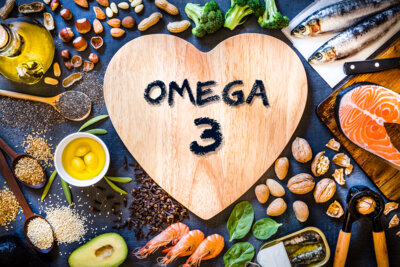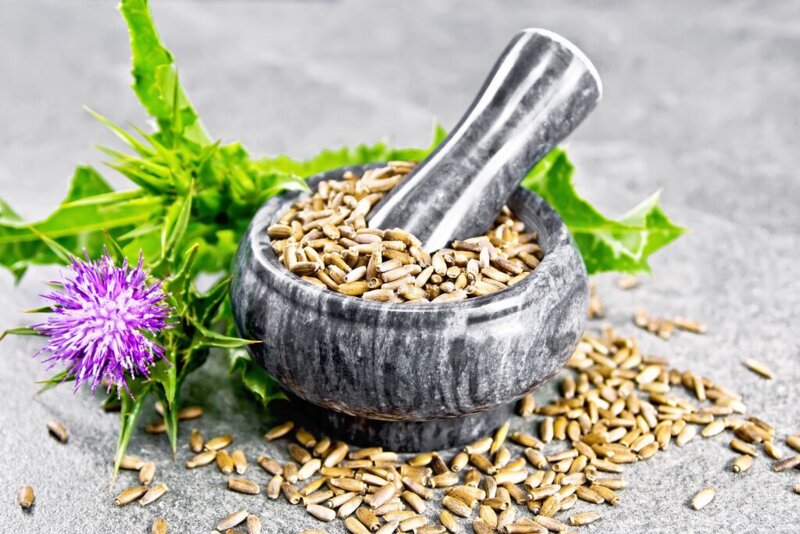To meet their protein needs, healthy adults should consume 0.83 grams of protein per kilogram of body weight per day(3).
Protein - the building block of life

What is the truth behind the myth: "Protein is only important for athletes", "Protein gives you muscles" and "Protein is protein"? This blog article aims to get to the bottom of these and many other exciting facts about protein as a vital substance.
What are proteins?
Proteins or proteins, together with carbohydrates and fats, are among the three main nutrients. Carbohydrates and fats primarily provide energy. Proteins, on the other hand, serve primarily as building material for muscles, organs and blood. They are the basic building blocks of every cell in our body.
Proteins consist of many amino acids linked together. Protein ingested through food is broken down by the body into individual amino acids. From these, the body in turn builds different proteins according to its needs. It can produce some of the amino acids itself. Others, the so-called "indispensable amino acids", must be supplied with food.
What does the body need proteins for?
Proteins have many different functions. Without proteins, our body could not exist: Proteins are building materials of cells, tissues and organs. They are important for building and maintaining muscles and bones. They support muscle function. As enzymes and hormones, they are involved in countless metabolic processes. Proteins support the immune system and help fight off infections. They also transport important substances such as oxygen or iron in the blood. Last but not least, they serve as an energy reserve. In the case of a lack of carbohydrates and fats, the body can also use proteins as an energy source 1, 2.
How much protein does the body need?
Since the body does not have a protein store and has to renew cells every day, it is dependent on a sufficient protein supply through the diet. If this is not provided or is insufficient, it goes to its reserves and breaks down valuable body protein, especially in the form of muscles.
Protein requirements for healthy adults
- For a 60 kg woman, this is 0.83 x 60 = 50 grams of protein per day.
- For an 80 kg man, it is 0.83 x 80 = 66 grams per day.
More protein in special situations
So what is the truth behind the myth that "protein is only important for athletes"? Nothing at all. Because the body needs more protein not only during sport, but in many special life situations. In addition to athletes, children, pregnant women, breastfeeding mothers and older people have a higher protein requirement. The body may also need additional protein during and after illness.
More protein for growth and development
Proteins are indispensable for cell and tissue growth. Therefore, the protein requirement is increased in phases of strong growth such as in children and adolescents and during pregnancy and breastfeeding.
Seniors need more protein
Body composition changes with age: the proportion of body fat increases, while muscle and bone mass decrease4. This also changes the nutrient requirements. The body needs fewer calories but even more protein than in younger years5. In addition, diseases can increase the need for protein. It is therefore recommended that seniors consume at least 1 to 1.2 grams of protein per kilogram of body weight daily6.
More protein for athletes
Proteins are needed for building, maintaining and regenerating muscles after training. Accordingly, athletes have an increased protein requirement. This depends on the intensity, duration and frequency of the training. Experts recommend 1.2 to 2.0 grams of protein per kilogram of body weight daily for athletes who exercise at least 5 hours per week7.
What are the health benefits of protein?
Proteins are of particular importance for older people
Everyone loses muscle as they get older. On average, one to two percent of muscle mass is lost every year after the age of 508. One reason for this is that the body has more trouble building up muscles in old age. At the same time, it needs more protein. If it does not get this from food, it breaks down muscles to get protein. The lack of muscles makes it more and more difficult to move. Lack of exercise in turn accelerates the breakdown of the muscles. This leads to a loss of muscle strength and muscle function. A vicious circle develops, which is also called sarcopenia8.
People with sarcopenia often feel weak, are unsteady and have difficulty walking. The fatal thing is that they have a threefold increased risk of falling9. A fall often leads to complicated fractures or head injuries. It can seriously change the lives of older people and massively impair their independence and quality of life10.
Maintaining muscle mass and muscle function requires exercise and an adequate protein supply. According to studies, a higher protein intake in seniors has positive effects on building and maintaining muscle mass11, 12. Thus, more protein can reduce the risk of sarcopenia and the resulting falls.
Not only the muscles, but also the bones are affected by age-related degradation. Bone mass already begins to decrease around the age of 35. Studies show that too little protein promotes bone loss13. This makes the bones more fragile and increases the risk of bone fractures. The good news is that a higher protein intake in combination with strength training can reduce the risk of bone fractures and osteoporosis14.
Protein and sport
Do you automatically get muscles from protein? If it were that simple. Muscles need protein to gain weight. But protein alone without training does not build muscles. A combination of regular training and an appropriate amount of protein, on the other hand, can improve training success and make muscles grow7.
Endurance training leads to a breakdown of muscle proteins during training. Therefore, not only strength athletes but also endurance athletes benefit from more protein15. An adapted protein intake leads to better performance and optimal regeneration of the muscles after the workout7.
Research shows that timing is crucial. The best result for muscle growth is achieved when protein is consumed throughout the day. In addition to quantity and timing, however, the composition of the protein is also crucial for success. According to experts, athletes should consume high-quality protein with a high content of indispensable amino acids7 (more on this below).
Proteins for a strong immune system
A sufficient protein supply is the best prerequisite for a strong immune system. A low protein intake, on the other hand, leads to an increased susceptibility to infections and a lower number of immune cells in the body16. The body also needs more protein for the formation of new tissue during severe illness, after accidents, operations or burns17.
Are all proteins equal?
Meat, fish, dairy products, eggs, pulses, soy and cereals contain a lot of proteins1. But not all proteins are the same. Plant and animal proteins differ in their composition. Proteins from animal foods usually contain more indispensable amino acids than plant proteins. Plant protein usually lacks one or even more of the essential amino acids18. However, this is not a problem in everyday life if you pay attention to the right mix. For optimal protein quality, it is best to combine different animal and plant protein sources. Ideal partners are, for example, egg plus potatoes, milk or soya. The combination of milk plus cereals or potatoes also provides a particularly high protein quality19.
Tips for an optimal protein supply
- Distribute protein rations correctly: Protein should be consumed throughout the day. An interval of 4 hours between two protein rations is ideal. Also important: consume a portion of protein 3 to 4 hours after intensive exercise(20).
- The top 10 vegetable protein sources: Tofu, tempeh, seitan, lentils, beans, peas, chickpeas, corn, quinoa, nuts(21).
- The top 10 animal protein sources: Meat, fish, seafood, eggs, cheese, milk, skyr, quark, cottage cheese, yoghurt(21).
- The combination makes the difference: cleverly combine animal and plant proteins for the best protein quality.
- For vegans: combine vegetable proteins with knowhow. Good partners are cereals plus pulses (e.g. lentil vegetables with rice) or maize plus beans (e.g. chilli sin carne).
- Dietary supplements, such as protein shakes, are a good source of high-quality protein
Sources
1Deutsche Gesellschaft für Ernährung (DGE). Ausgewählte Fragen und Antworten zu Protein und unentbehrlichen Aminosäuren. Januar 2021 Abgerufen am 21.02.2023 von https://www.dge.de/wissenschaft/faqs/protein/.
2Europäisches Informationszentrum für Lebensmittel (EUFIC). Food Facts for Healthy Choices. Was sind Proteine und welche Funktionen erfüllen sie im Körper? Stand: 16.12019. Abgerufen am 10.02.2023 von https://www.eufic.org/de/in-unserem-essen/artikel/was-sind-proteine-und-welche-funktionen-erfullen-sie-im-korper/.
3Bundesamt für Lebensmittelsicherheit und Veterinärwesen (BLV). Bedarf an Nährstoffen. Stand: 16.11.2022. Abgerufen am 14.02.2023 von https://www.blv.admin.ch/blv/de/home/lebensmittel-und-ernaehrung/ernaehrung/empfehlungen-informationen/naehrstoffe/hauptnaehrstoffe.html
4Volkert D. Ernährung im Alter. In: Biesalski HK, Bischoff SC, Pirlich M, Weimann A (Hrsg.). Ernährungsmedizin. Georg Thieme Verlag, 5. Auflage 2018. Abgerufen am 20.02.2023 von https://www.thieme-connect.de/products/ebooks/lookinside/10.1055/b-0037-147951
5DEBInet, 2023a. Deutsches Ernährungsberatungs- & informationsnetz. Ernährung im Alter- Ernährungsempfehlungen. Abgerufen am 21.02.2023 von https://www.ernaehrung.de/tipps/alter/alter11.php
6Bauer J, Biolo G, Cederholm T, et al. Evidence-based recommendations for optimal dietary protein intake in older people: a position paper from the PROT-AGE Study Group. J Am Med Dir Assoc. 2013;14(8):542-559. doi:10.1016/j.jamda.2013.05.021. Abgerufen am 01.02.2023 von https://pubmed.ncbi.nlm.nih.gov/23867520/.
7König D, et al.: Proteinzufuhr im Sport. Position der Arbeitsgruppe Sporternährung der Deutschen Gesellschaft für Ernährung e.V. ErnährungsUmschau 2020; 67(7): 132–9. Abgerufen am 01.02.2023 von https://www.google.com/url?sa=t&rct=j&q=&esrc=s&source=web&cd=&cad=rja&uact=8&ved=2ahUKEwjot8CXvKb9AhVRi_0HHbcLDQsQFnoECBMQAQ&url=https%3A%2F%2Fwww.ernaehrungs-umschau.de%2Ffileadmin%2FErnaehrungs-Umschau%2Fpdfs%2Fpdf_2020%2F07_20%2FEU07_2020_M406_M413_1.pdf&usg=AOvVaw12izdEhHE6fMtxMyPBUAGN.
8Universitätsspital Zürich (USZ). Sarkopenie. Abgerufen am 03.02.2023 von https://www.usz.ch/krankheit/sarkopenie/.
9Schaupp A, Martini S, Schmidmaier R, Drey M. Diagnostisches und therapeutisches Vorgehen bei Sarkopenie. Z Gerontol Gerait 2021; 54:7127-24. Abgerufen am 03.02.2023 von https://www.ncbi.nlm.nih.gov/pmc/articles/PMC8450554/
10Rheumaliga Schweiz. Auf gar keinen Fall! So vermeiden Sie Stürze. 2015. Abgerufen am 15.02.2023 von https://www.google.com/url?sa=t&rct=j&q=&esrc=s&source=web&cd=&cad=rja&uact=8&ved=2ahUKEwi-1oa4zKb9AhXC0KQKHUisBfYQFnoECA8QAw&url=https%3A%2F%2Fwww.rheumaliga-shop.ch%2Fde%2FShop%2Fcont-shop%2Fscat-0000045%2Fsart-D1080-K%2FArtIDCurr-D1080&usg=AOvVaw3eST5-NaxCMNSXDkQfMCaA
11Gregorio L, Brindisi J, Kleppinger A, et al. Adequate dietary protein is associated with better physical performance among post-menopausal women 60-90 years. J Nutr Health Aging. 2014;18(2):155-160. doi:10.1007/s12603-013-0391-2. Abgerufen am 16.02.2023 von https://pubmed.ncbi.nlm.nih.gov/24522467/.
12Scott D, Blizzard L, Fell J, Giles G, Jones G. Associations between dietary nutrient intake and muscle mass and strength in community-dwelling older adults: the Tasmanian Older Adult Cohort Study. J Am Geriatr Soc. 2010;58(11):2129-2134. doi:10.1111/j.1532-5415.2010.03147.x. Abgerufen am 16.02.2023 von https://pubmed.ncbi.nlm.nih.gov/21054294/
13Krok-Schoen JL, Archdeacon Price A, Luo M, Kelly OJ, Taylor CA. Low Dietary Protein Intakes and Associated Dietary Patterns and Functional Limitations in an Aging Population: A NHANES analysis. J Nutr Health Aging. 2019;23(4):338-347. doi:10.1007/s12603-019-1174-1. Abgerufen am 16.02.2023 von https://pubmed.ncbi.nlm.nih.gov/30932132/
14Nowson C, O'Connell S. Protein Requirements and Recommendations for Older People: A Review. Nutrients. 2015;7(8):6874-6899. Published 2015 Aug doi:10.3390/nu7085311. Abgerufen am 16.02.2023 von https://pubmed.ncbi.nlm.nih.gov/26287239/
15Moore DR, Camera DM, Areta JL, Hawley JA. Beyond muscle hypertrophy: why dietary protein is important for endurance athletes. Appl Physiol Nutr Metab. 2014;39(9):987-997. doi:10.1139/apnm-2013-0591. Abgerufen am 17.02.2023 von https://pubmed.ncbi.nlm.nih.gov/24806440/
16Iddir M, Brito A, Dingeo G, Fernandez Del Campo SS, Samouda H, La Frano MR, Bohn T. Strengthening the Immune System and Reducing Inflammation and Oxidative Stress through Diet and Nutrition: Considerations during the COVID-19 Crisis. Nutrients. 2020; 12(6):1562. Abgerufen am 17.02.2023 von https://doi.org/10.3390/nu12061562
17Bundesamt für Gesundheit (BAG). Proteine in der Ernährung des Menschen: Empfehlungen. April, 2011. Abgerufen am 02.2023 von https://www.blv.admin.ch/dam/blv/de/dokumente/das-blv/organisation/kommissionen/eek/proteine-in-der-ernaehrung-des-mensches/zusammenfassung-proteine-ernaehrung-menschen.pdf.download.pdf/Proteinbericht_de-3.pdf
18Schweizerische Gesellschaft für Ernährung (SGE). Proteine: Qualität und Gehalt in Lebensmitteln. Stand: 2021. Abgerufen am 17.02.2023 von https://www.google.com/url?sa=t&rct=j&q=&esrc=s&source=web&cd=&ved=2ahUKEwivyvDN3ab9AhXFgv0HHTCuCqIQFnoECBQQAQ&url=https%3A%2F%2Fwww.sge-ssn.ch%2Fmedia%2FMerkblatt-Proteine-Qualitaet-Gehalt-in-Lebensmitteln.pdf&usg=AOvVaw1u9FIt9T1XNUCYvxKatXLT
19DEBInet, 2023b. Deutsches Ernährungsberatungs- & informationsnetz. Biologische Wertigkeit. Abgerufen am 17.02.2023 von https://www.ernaehrung.de/lexikon/ernaehrung/b/Biologische-Wertigkeit.php
20SSNS. Swiss Sports Nutrition Society. Hot Topic: Protein im Sport. November, 2022. Abgerufen am 17.02.2023 von https://www.google.com/url?sa=t&rct=j&q=&esrc=s&source=web&cd=&ved=2ahUKEwi67qi93qb9AhUDhv0HHREvBfEQFnoECA0QAQ&url=https%3A%2F%2Fwww.ssns.ch%2Fwp-content%2Fuploads%2F2022%2F11%2FHotTopic_Protein_Sport_3.2.pdf&usg=AOvVaw2W_AQCe9X7b2oRHytHTSu7.
21Schweizer Nährwertdatenbank. Abgerufen am 17.02.2023 von https://naehrwertdaten.ch/de/











